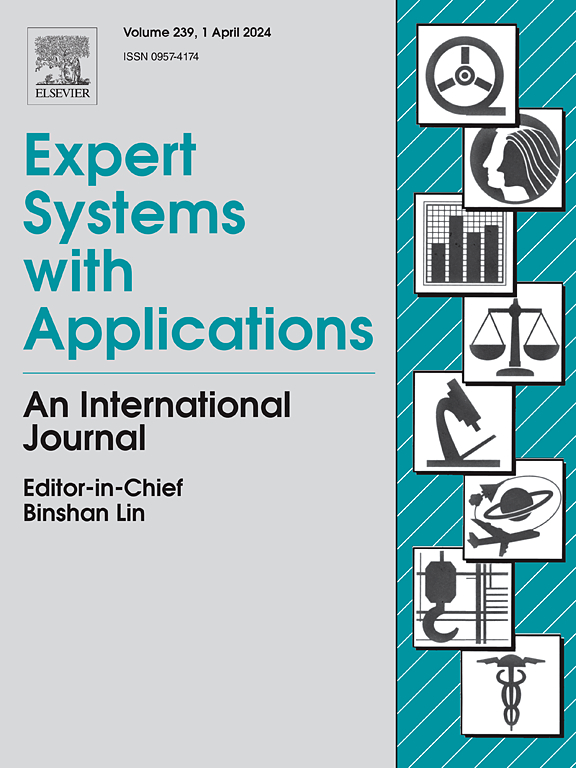A day-ahead wind speed correction method: Enhancing wind speed forecasting accuracy using a strategy combining dynamic feature weighting with multi-source information and dynamic matching with improved similarity function
IF 7.5
1区 计算机科学
Q1 COMPUTER SCIENCE, ARTIFICIAL INTELLIGENCE
引用次数: 0
Abstract
Forecasting error of day-ahead wind speed (WS) seriously affects wind power integration and power system security and stability. In this regard, this paper fully considers the spatiotemporal correlation of wind farms (WFs) in different geographical locations, and proposes a day-ahead WS combined correction method that integrates multi-source station dynamic information weighting. Different from the previous WS correction methods, this paper fully considers the dynamic correlation of WS between the WFs, introduces an improved weighted similarity function to screen and dynamically weight the information of WFs with dynamic correlation, and introduces the dynamic weighting feature into the WS correction process. A combined decomposition mechanism is proposed, which combines sequential variational mode decomposition (SVMD) and feature mode decomposition (FMD) models to extract the most relevant trend components and non-stationary components of forecasted and measured WS. A combined correction model is introduced, and a combined architecture of Non-stationary Transformer combined with bidirectional long short-term memory network (Ns-Transformer-BILSTM) is used to correct the stationary WS component. A dynamic matching mechanism of fluctuation components considering improved similarity is proposed for the correction of non-stationary components. The proposed method is applied to several regional WFs in China. The experimental results show that the average correction of NRMSE, NMAE and R can reach 2.4 % ∼ 3.7 %, 2.0 % ∼ 3.0 % and 3.3 % ∼ 9.7 %, respectively. The NRMSE and NMAE corresponding to the corrected WS of certain individual WFs can be reduced by 10 % and 9 %, respectively, and R can be increased by 33 %.
日前风速校正方法:利用多源信息动态特征加权和改进相似度函数动态匹配相结合的策略提高风速预报精度
日前风速(WS)预报误差严重影响风电并网和电力系统安全稳定。为此,本文充分考虑了不同地理位置风电场(WFs)的时空相关性,提出了一种融合多源站动态信息加权的日前风速联合修正方法。与以往的 WS 校正方法不同,本文充分考虑了风电场之间 WS 的动态相关性,引入改进的加权相似度函数对具有动态相关性的风电场信息进行筛选和动态加权,并将动态加权特性引入 WS 校正过程。提出了一种组合分解机制,它结合了序列变异模式分解(SVMD)和特征模式分解(FMD)模型,以提取预报和实测 WS 中最相关的趋势成分和非平稳成分。引入了组合校正模型,并使用非稳态变压器与双向长短期记忆网络(Ns-Transformer-BILSTM)的组合架构来校正 WS 的稳态成分。为校正非稳态分量,提出了一种考虑改进相似性的波动分量动态匹配机制。将所提出的方法应用于中国的几个区域 WF。实验结果表明,NRMSE、NMAE 和 R 的平均校正率分别达到 2.4 % ~ 3.7 %、2.0 % ~ 3.0 % 和 3.3 % ~ 9.7 %。某些单个 WF 的校正 WS 对应的 NRMSE 和 NMAE 可分别降低 10 % 和 9 %,R 可增加 33 %。
本文章由计算机程序翻译,如有差异,请以英文原文为准。
求助全文
约1分钟内获得全文
求助全文
来源期刊

Expert Systems with Applications
工程技术-工程:电子与电气
CiteScore
13.80
自引率
10.60%
发文量
2045
审稿时长
8.7 months
期刊介绍:
Expert Systems With Applications is an international journal dedicated to the exchange of information on expert and intelligent systems used globally in industry, government, and universities. The journal emphasizes original papers covering the design, development, testing, implementation, and management of these systems, offering practical guidelines. It spans various sectors such as finance, engineering, marketing, law, project management, information management, medicine, and more. The journal also welcomes papers on multi-agent systems, knowledge management, neural networks, knowledge discovery, data mining, and other related areas, excluding applications to military/defense systems.
 求助内容:
求助内容: 应助结果提醒方式:
应助结果提醒方式:


